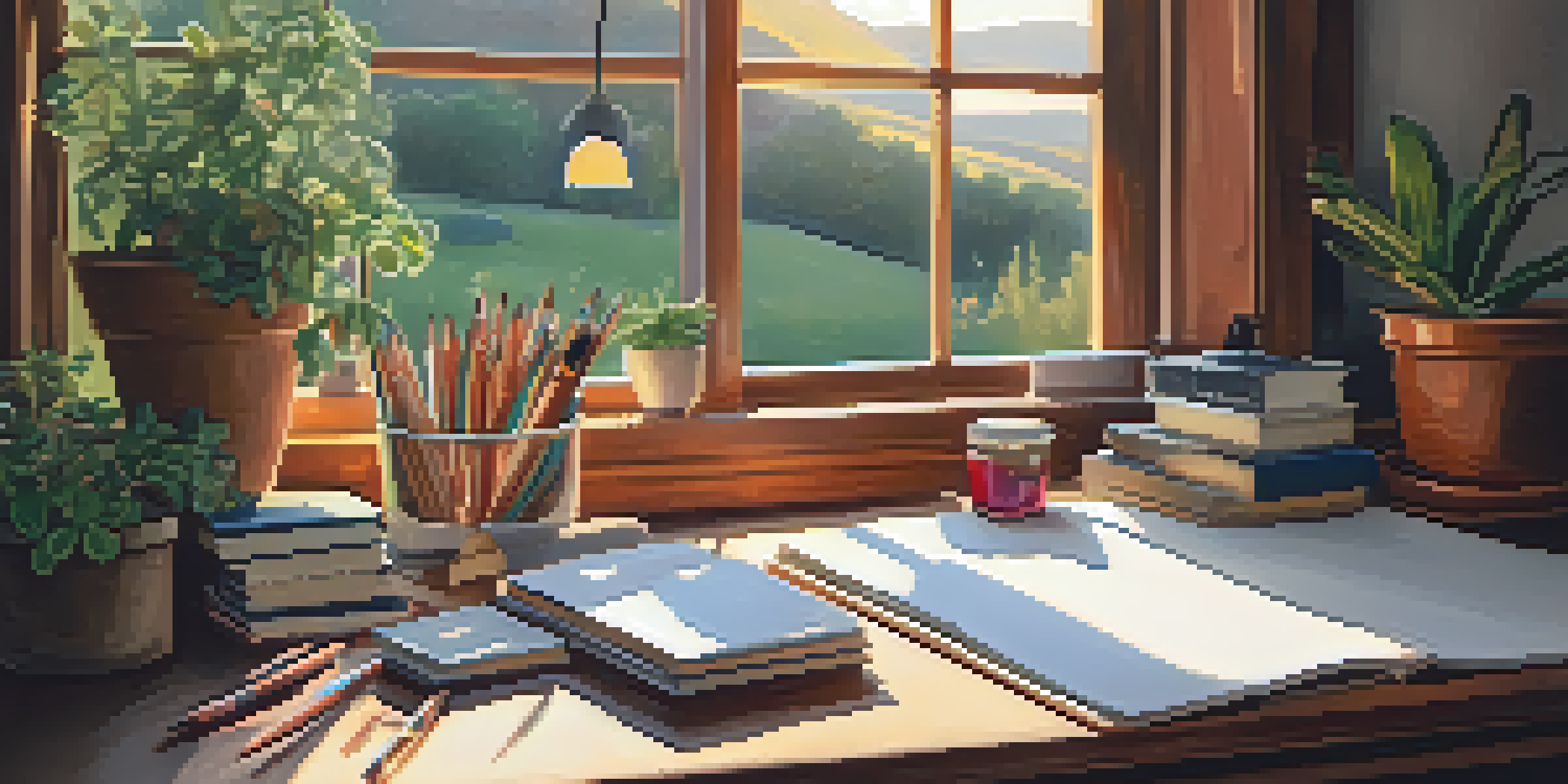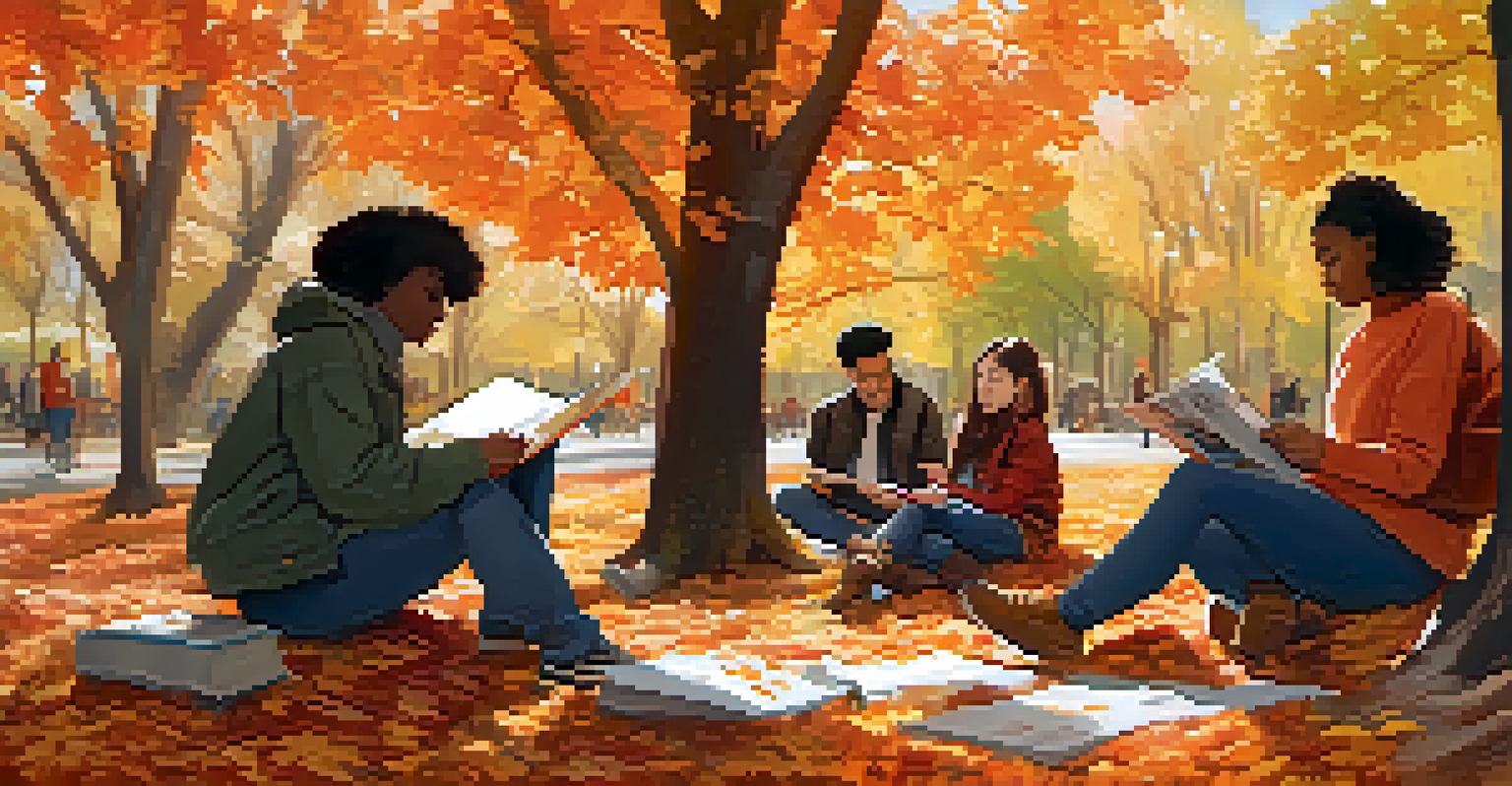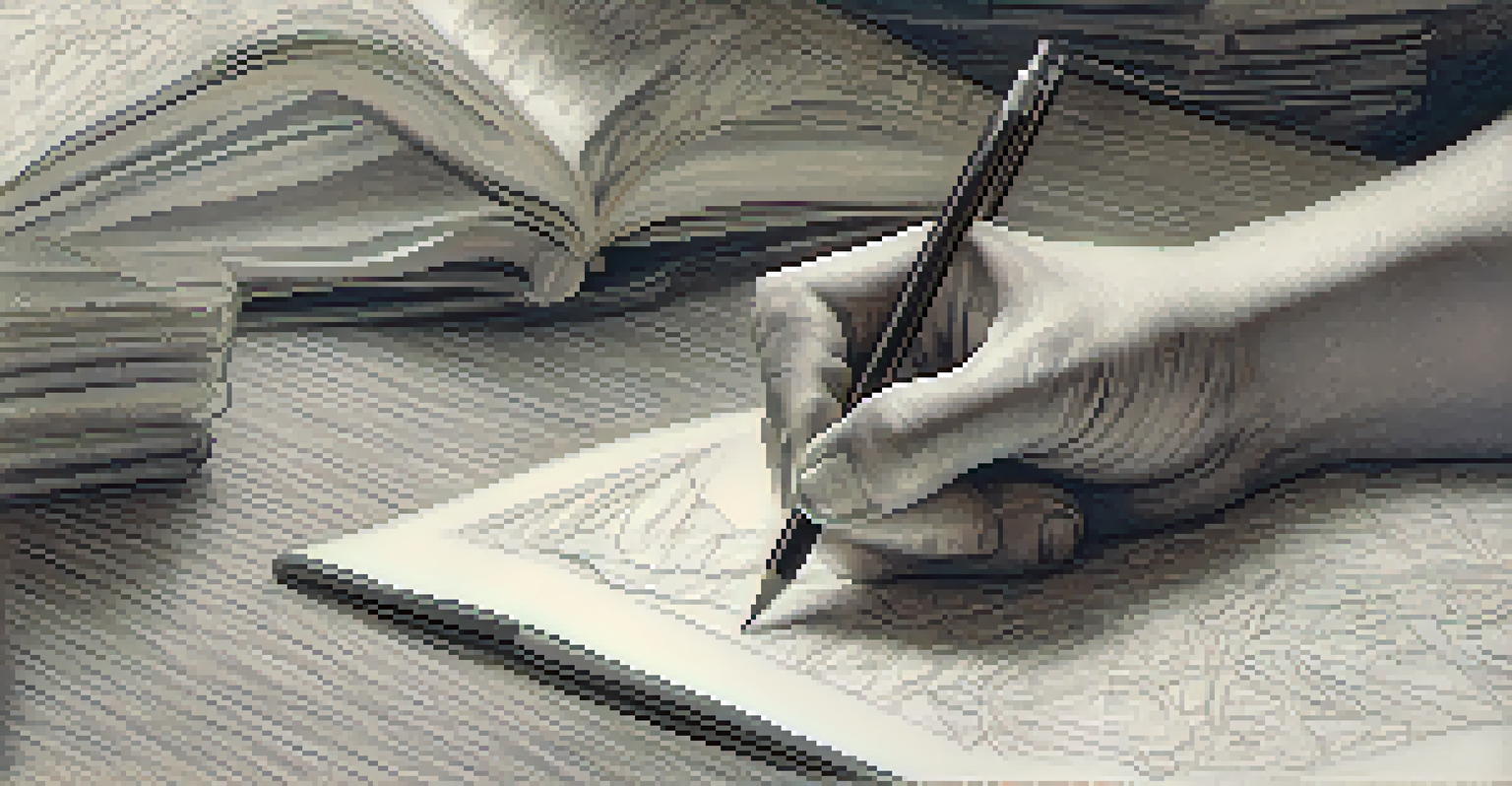The Importance of Sketching in the Artistic Process Explained

Understanding Sketching: More Than Just a Doodle
Sketching often conjures images of quick, casual drawings. However, it plays an essential role in the artistic process. Beyond mere preliminary work, sketching serves as the foundation for building ideas and exploring concepts. It's where the artist's imagination takes flight, allowing for the free flow of creativity.
Every artist was first an amateur.
When artists put pencil to paper, they are engaging in a dialogue with their thoughts. This process helps clarify their vision, transforming abstract ideas into tangible forms. For instance, a simple sketch of a landscape can lead to a deeper exploration of color, texture, and composition in the final piece.
Moreover, sketching can be a risk-free space to make mistakes. Artists can experiment and iterate without the pressure of creating a masterpiece. This freedom fosters a playful approach that can unveil unexpected and exciting directions for their work.
Sketching as a Tool for Idea Generation
One of the greatest benefits of sketching is its power to generate ideas. When artists sketch, they're not just reproducing what's in front of them; they're interpreting and reimagining the world. Think of it as brainstorming on paper, where every line can lead to a new thought or concept.

For example, an artist may start with a rough sketch of a scene, only to realize that a different perspective or composition could enhance the piece. This process of visual exploration is akin to solving a puzzle, where each sketch brings the artist closer to the final solution.
Sketching Fuels Creative Ideas
Sketching acts as a brainstorming tool, enabling artists to explore new perspectives and concepts.
Additionally, sketching can help artists set the tone for their projects. Whether it's a light and airy line drawing or a bold and dynamic composition, these initial sketches establish a visual language that can inform the entire artistic process.
Building Technical Skills Through Practice
Sketching is an excellent way for artists to hone their technical skills. Just like athletes practice their moves, artists can refine their drawing techniques through regular sketching. This practice helps develop muscle memory, improving accuracy and confidence over time.
Sketching is a way to express your thoughts, to see what you think and to think what you see.
For instance, an artist who frequently sketches human figures will notice significant improvement in their anatomy and proportions. This mastery is crucial when they eventually tackle more complex compositions or detailed works.
Ultimately, consistent sketching can transform an artist's style. The more they sketch, the more they discover their unique voice, allowing them to express their ideas in a way that feels authentic and personal.
Capturing Inspiration in the Moment
Inspiration can strike at any moment, and sketching allows artists to capture those fleeting ideas. Whether it's a stunning sunset, a fascinating character, or an interesting object, having a sketchbook nearby enables quick documentation of inspiration. This habit can be invaluable in an artist's creative repertoire.
Imagine walking through a vibrant market and noticing the interplay of colors and shapes. A quick sketch can preserve that moment and serve as a reference for future projects. This practice not only enriches their visual library but also deepens their understanding of the world around them.
Enhancing Skills Through Practice
Regular sketching allows artists to refine their technical skills, improving their overall confidence and style.
By sketching regularly, artists create a personal archive of ideas and observations. These sketches can spark future projects, turning a simple moment of inspiration into a full-fledged artwork.
Sketching as a Form of Meditation and Mindfulness
Sketching can also serve as a meditative practice, offering artists a chance to unwind and focus their minds. The simple act of drawing can be incredibly calming, helping to alleviate stress and anxiety. This mindfulness in art encourages creativity to flourish.
When an artist sketches, they often enter a flow state, where time seems to disappear and concentration deepens. This experience can be therapeutic, allowing for self-expression and exploration of emotions. Just like meditation, it provides a safe space to reflect and unwind.
Furthermore, this meditative aspect of sketching can inspire new ideas. Artists may find that their most profound thoughts emerge during these quiet moments, leading to fresh insights and unique artistic directions.
The Collaborative Power of Sketching
Sketching isn't just a solitary activity; it can also foster collaboration among artists. Sharing sketches can spark discussions, leading to new projects and ideas. This collaborative spirit can enhance creativity and push artists to explore new avenues.
Consider a group of artists who come together for a sketching session. As they share their work, they can offer feedback and inspiration, resulting in a dynamic exchange of ideas. This collaborative environment can lead to exciting projects that none of them could have envisioned alone.
Sketching as a Mindfulness Practice
Engaging in sketching can provide a meditative escape, fostering creativity while alleviating stress.
Moreover, collaborative sketching can introduce artists to different styles and techniques. Exposure to diverse perspectives enriches their understanding and can ultimately influence their own creative practice.
Sketching: A Gateway to Final Artworks
Finally, sketching serves as a crucial stepping stone toward creating final artworks. These initial sketches provide a roadmap for artists, guiding them through the complexities of their projects. Each sketch leads to a more refined piece, ensuring that the artist's vision is accurately conveyed.
When moving from sketch to final artwork, artists can refer back to their sketches for inspiration and direction. This process enables them to maintain the spontaneity of their initial ideas while refining details and techniques.

In essence, sketching lays the groundwork for artistic success. By investing time in sketches, artists can create more polished and impactful final pieces that resonate with their audience.